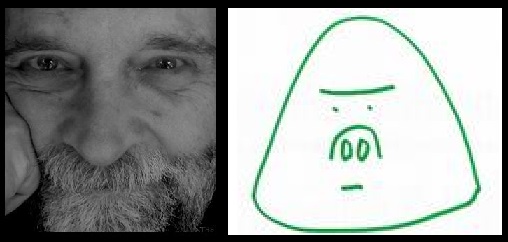March 7, 2015
(THE BOOK) Chapter 15: Trauma
This entry was posted on Saturday, March 7th, 2015 at 12:00 am and posted in control. You can follow any responses to this entry through the RSS 2.0 feed.
One response to “(THE BOOK) Chapter 15: Trauma”
Leave a comment Cancel reply
This site uses Akismet to reduce spam. Learn how your comment data is processed.
Welcome to MONKEYTRAPS.
This is a blog about the oldest human addiction: control.
It’s co-authored by Steve, a therapist who specializes in control issues, and Bert, his control-addicted inner monkey.
(Bert is a metaphor. Steve’s mostly real.)
For a fuller explanation of what this is all about, click on START HERE above.
Feedback welcome, always.
Glad you found us.

Steve & Bert
-
Join 9,336 other subscribers
COMING SOON: An expanded Second Edition

CLICK HERE TO ORDER MONKEYTRAPS (THE BOOK)

Follow the conversation:
-
Recent Posts
- Chapter 57: About alternatives to control
- Chapter 56: About self-care
- Chapter 55: About parenting
- Chapter 54: About self-worth
- Chapter 53: About defenses
- Chapter 52: About addictions
- Chapter 51: About feelings
- Chapter 50: About caretaking
- Chapter 49: About people-pleasing
- Chapter 48: About relationships
- Chapter 47: About family
- Chapter 46: About boundaries
- Chapter 45: About emotional problems
- Chapter 44: About internal controlling
- Chapter 43: About external controlling
- Chapter 42: About controlling
- Chapter 41: About control
- Chapter 40: A self-assessment
- Boundaries 101
- The 3-question machine
Blog Stats
- 165,190 hits
Post archives
- April 2024 (1)
- March 2024 (17)
- February 2024 (13)
- January 2024 (8)
- December 2023 (15)
- November 2023 (32)
- October 2023 (31)
- September 2023 (27)
- May 2023 (2)
- April 2023 (1)
- January 2023 (2)
- August 2022 (5)
- June 2022 (3)
- January 2021 (1)
- November 2020 (6)
- October 2020 (9)
- September 2020 (7)
- July 2020 (3)
- June 2020 (5)
- May 2020 (5)
- April 2020 (4)
- March 2020 (6)
- February 2020 (11)
- January 2020 (2)
- August 2019 (3)
- July 2019 (4)
- September 2018 (5)
- August 2018 (2)
- July 2018 (2)
- June 2018 (1)
- May 2018 (1)
- April 2018 (2)
- March 2018 (7)
- February 2018 (7)
- January 2018 (1)
- December 2017 (3)
- November 2017 (4)
- October 2017 (2)
- September 2017 (2)
- August 2017 (4)
- July 2017 (8)
- June 2017 (6)
- May 2017 (4)
- April 2017 (4)
- March 2017 (6)
- February 2017 (9)
- January 2017 (8)
- December 2016 (4)
- November 2016 (7)
- October 2016 (6)
- September 2016 (12)
- August 2016 (1)
- July 2016 (8)
- June 2016 (7)
- May 2016 (11)
- April 2016 (9)
- March 2016 (22)
- February 2016 (19)
- January 2016 (11)
- December 2015 (21)
- November 2015 (16)
- October 2015 (11)
- September 2015 (1)
- August 2015 (1)
- July 2015 (3)
- June 2015 (5)
- May 2015 (4)
- April 2015 (6)
- March 2015 (11)
- February 2015 (13)
- January 2015 (16)
- December 2014 (16)
- November 2014 (15)
- October 2014 (4)
- September 2014 (17)
- August 2014 (29)
- July 2014 (21)
- June 2014 (20)
- May 2014 (23)
- April 2014 (21)
- March 2014 (10)
- February 2014 (12)
- April 2013 (2)
- February 2013 (1)
- January 2013 (2)
- December 2012 (6)
- November 2012 (12)
- October 2012 (13)
- September 2012 (17)
- August 2012 (10)
- July 2012 (7)
- June 2012 (11)
- May 2012 (10)
- April 2012 (9)
- March 2012 (8)
- February 2012 (9)
- January 2012 (10)
- December 2011 (8)
- November 2011 (9)
- October 2011 (9)
- September 2011 (9)
- August 2011 (8)
- July 2011 (10)
- June 2011 (9)
- May 2011 (9)
- April 2011 (9)
- March 2011 (2)
- August 2010 (3)
- July 2010 (7)
- June 2010 (4)
Monkeytraps archives
BERT’S IN THERAPY. To listen in, click on his nose.



March 12th, 2015 at 8:02 pm
[…] having self-respect for the first time, I no longer deny my trauma. “Get up, get up, Get On With It!” cried the inner critic, and I reply that I would if […]